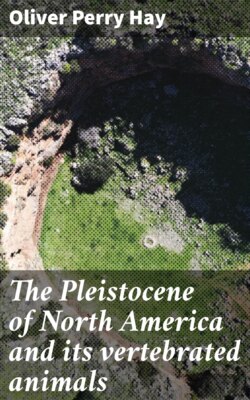Читать книгу The Pleistocene of North America and its vertebrated animals - Oliver Perry Hay - Страница 39
На сайте Литреса книга снята с продажи.
NEW JERSEY.
ОглавлениеTable of Contents
(Map 3.)
1. Long Branch, Monmouth County.—In the American Museum of Natural History, New York, there is a large heel-bone which was found at the place named and identified as having belonged to a species of Megatherium, most probably to M. mirabile. It was presented by Dr. A. R. Ledoux, of New York, who wrote that he found it about 40 years ago while bathing at Long Branch. With this bone were found a skull of a walrus and a tooth of a mastodon. The heel-bone is somewhat more than 15 inches long. It was incrusted with barnacles and small oyster shells.
While one can not at present be certain that this animal did not live up to a late stage of the Pleistocene, it is improbable that it did so. It is also quite improbable that the megatherium and walrus lived at Long Branch at the same time. It is more likely that the megatherium had its existence there at the time when horses lived in the same region and when the Port Kennedy fauna existed; that is, at some time during the early Pleistocene about the Aftonian stage.
